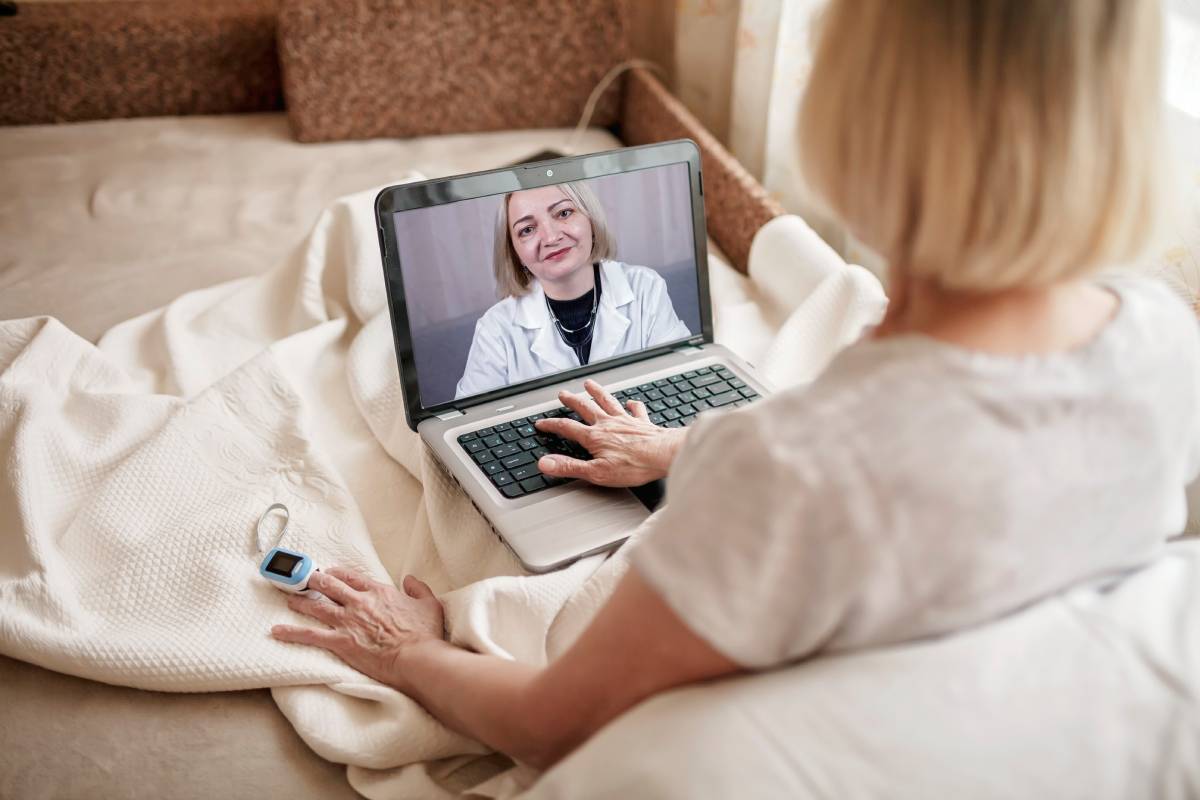Remote Postoperative Monitoring

As a result of the Covid-19 pandemic, many hospitals have been operating at full or above full capacity. Given these limitations of space and resources, there has been heightened interest in reducing the length of acute postoperative care. One possible solution is known as post-discharge remote automated monitoring, in which patients can be cared for and monitored virtually. Remote automated monitoring (RAM) allows physicians to remotely obtain pertinent data – such as blood pressure and heart rate – as well as make virtual visits while patients recover outside of the hospital. Some studies have suggested that remote monitoring has significant potential as an approach to postoperative care.1,2 However, until recently, larger-scale studies on the matter had not yet been conducted.
One initial concern about remote postoperative monitoring was whether it was as effective at aiding patient recovery as hospitalization. To this end, authors McGillion et al. sought to compare the efficacy of RAM to standard care.3 Eligible patients for the study were over the age of 40 years, had received non-elective surgery, and had been discharged in the last 24 hours. A total of 905 consenting participants were randomized into a control group (which received in-hospital care) and an experimental group, which received a tablet computer and RAM technology to take home. The patients receiving virtual care were able to interface digitally with nurses to discuss symptoms and reinforce treatment plans. For wound care, photos of progress could be sent virtually. If complications and/or concerns arose, doctors were called in to make virtual visits and modify treatment plans. Access to doctors and nurses was available to the patients at all hours of the day, seven days a week.
In order to measure the efficacy of RAM versus in-patient care, a number of dependent variables were taken into account. Primary outcome was living days spent at home during 31 total days of follow up after discharge. A number of secondary outcomes were also measured, including acute hospital care, hospital readmission, pain, and number of drug errors.
The results of the study were somewhat surprising: the mean number of days alive at home in the virtual care group was 29.7, which was not significantly different from the control group’s 29.5. A number of secondary outcomes supported the efficacy of RAM: for example, more patients had a drug error detected and corrected in the experimental group than the control group. Given the high frequency of drug errors reported in the remote monitoring group (29.7 percent, or an average of 2.1 errors per patient), the increased rate of correction had highly significant implications for quality of patient care. Moreover, the patients in the experimental group also reported reduced pain at days 7, 15, and 30 – possibly due to reduced drug-related errors. Interestingly, individuals in the virtual care group also used significantly more paracetamol (acetaminophen) for pain management, for a well-tolerated drug with fewer risks than stronger painkillers. Finally, patients in the RAM group had fewer visits to the emergency department and reduced need for brief acute hospital care.3
All in all, the authors concluded that not only does remote monitoring have the potential to free up hospital space and reduce the cost of postoperative care, but it also confers equal or improved patient outcomes in a number of ways. Given these findings, it can be anticipated that remote monitoring will be continually integrated into postoperative care.
References
1 Thornton J. (2020). The “virtual wards” supporting patients with covid-19 in the community. BMJ (Clinical research ed.), 369, m2119. https://doi.org/10.1136/bmj.m2119
2 Yang, H., Dervin, G., Madden, S., Fayad, A., Beaulé, P., Gagné, S., Crossan, M. L., Wheeler, K., Afagh, M., Zhang, T., & Taljaard, M. (2018). Postoperative Home Monitoring After Joint Replacement: Retrospective Outcome Study Comparing Cases With Matched Historical Controls. JMIR perioperative medicine, 1(2), e10169. https://doi.org/10.2196/10169
3 McGillion, M. H., Parlow, J., Borges, et al. (2021). Post-discharge after surgery Virtual Care with Remote Automated Monitoring-1 (PVC-RAM-1) technology versus standard care: randomised controlled trial. BMJ (Clinical research ed.), 374, n2209. https://doi.org/10.1136/bmj.n2209
